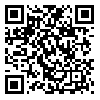Sat, Apr 19, 2025
[Archive]
Volume 7, Issue 4 (December 2011)
IJEEE 2011, 7(4): 260-272 |
Back to browse issues page
Download citation:
BibTeX | RIS | EndNote | Medlars | ProCite | Reference Manager | RefWorks
Send citation to:



BibTeX | RIS | EndNote | Medlars | ProCite | Reference Manager | RefWorks
Send citation to:
Yaghobi H, Ansari K, Rajabi Mashhadi H. Analysis of Magnetic Flux Linkage Distribution in Salient-Pole Synchronous Generator with Different Kinds of Inter-Turn Winding Faults . IJEEE 2011; 7 (4) :260-272
URL: http://ijeee.iust.ac.ir/article-1-347-en.html
URL: http://ijeee.iust.ac.ir/article-1-347-en.html
Abstract: (10837 Views)
A reliable and accurate diagnosis of inter-turn short circuit faults is a challenging problem in the area of fault diagnosis of electrical machines. The purpose of this challenge is to be more efficient in fault detection and to provide a reliable method with low-cost sensors and simple numerical algorithms which not only detect the occurrence of the fault, but also locate its position in the winding. Hence, this paper presents a novel method for diagnosis of different kinds of inter-turn winding faults in a salient-pole synchronous generator using the change in the magnetic flux linkage. It describes the influence of inter-turn winding faults on the magnetic flux linkage distribution of the generator. The main feature of the proposed method is its capability to identify the faulty coils under two types of inter-turn winding faults. Also, simple algorithm, low cost sensor and sensitivity are the other feature in the proposed technique. In this method, generator air gap flux linkage is measured via search coils sensor installed under the stator wedges. Theoretical approach based on Finite Element Method (FEM) together with experimental results derived from a 4-pole, 380U, 1500 rpm, 50 Hz, 50 KVA, 3-phase salient-pole synchronous generator confirm the validity of the proposed method.
Keywords: Synchronous Generator , Fault Diagnosis , Linkage Flux Analysis , Inter-Turn Winding Fault
Type of Study: Research Paper |
Subject:
Fault Diagnosis
Received: 2010/11/14 | Revised: 2011/12/24 | Accepted: 2011/12/19
Received: 2010/11/14 | Revised: 2011/12/24 | Accepted: 2011/12/19
| Rights and permissions | |
 |
This work is licensed under a Creative Commons Attribution-NonCommercial 4.0 International License. |







